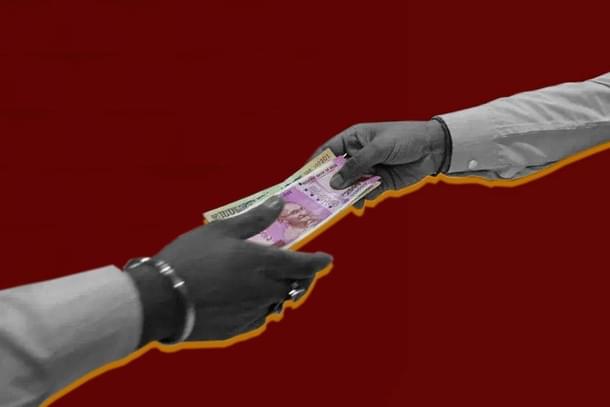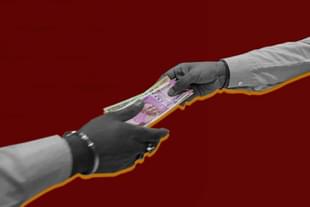Economy
Credit Where Credit Is Due: Why Bank Lending Will Continue To Aid Economic Recovery In India
Dr Subhash Chandra Pandey
Jan 10, 2022, 01:08 PM | Updated 01:07 PM IST
Save & read from anywhere!
Bookmark stories for easy access on any device or the Swarajya app.


On Friday (7 January), the National Statistical Office, Ministry of Statistics and Programme Implementation, released the first advance estimates of gross domestic product (GDP) for the current financial year.
GDP this year is expected to grow by 9.2 per cent after a contraction of 7.3 per cent in 2020-21, measured at constant 2011-12 prices. At current market prices, the GDP is expected to grow by 17.6 per cent against a contraction of 3 per cent in 2020-21.
In the budget 21-22, the assumed growth in nominal terms was 14.4 per cent. (Nominal growth is measured by looking at change in GDP at current prices so it is higher than real growth rate which is at constant prices. 9.2 per cent real growth and 17.6 per cent nominal growth means 7.7 per cent inflation.)
Projected sectoral growths (real growth, at constant 2011-12 prices) are: agriculture, forestry and fishing 3.9 per cent; mining and quarrying 14.3 per cent; manufacturing 12.5 per cent; electricity, gas, water supply and other utility services 8.5 per cent; construction 10.7 per cent; trade, hotels, transport, communication and services related to broadcasting 11.9 per cent; financial, real estate and professional services 4 per cent; public administration, defence and other services 10.7 per cent (overall 8.6 per cent).
It roughly means that the total sale price of goods and services during 2021-22 is expected to be 17.6 per cent higher than that in 2020-21. From Rs 20,351,013 crore in 2019-20 and 19,745,670 crore in 2020-21, it is expected to cross Rs 232 lakh crore in 2021-22.
Prima facie, this is very good news and indicates that in 2021-22, India’s economy will regain pre-Covid levels of national output both in real and nominal terms.
India is among the few countries that have recorded four consecutive quarters of growth amid Covid-19 (October 2021-September 2022) reflecting the resilience of the Indian economy.
It sounds pretty heartless to worry about economy and livelihoods amidst a ravaging pandemic but it is difficult to weigh in golden balance whether lives or livelihoods are more important. Covid-19 mutants particularly Omicron are causing massive disruption all around with rising numbers of infected persons and mixed signals on ‘stop or move on with caution’ about daily activities.
For us, the pandemic is an imported calamity. The main gateways to India have been worst affected.
On 31 December 2019, China first reported to World Health Organization (WHO) that 41 patients in Wuhan had contracted a mysterious pneumonia not amenable to conventional treatment. Beginning 23 January, first the Wuhan city then entire Hubei province and then some other cities were locked down. An unprecedented quarantine was imposed on 50 million people across 15 cities.
Major democracies including India have failed to emulate the ruthless measures taken by China (and could be taken by China alone) to contain the damage. May be there is more than what meets the eye here.
After the first and second waves, we are seeing a rising tide of third wave, so far less distressing than the previous one. This is due to combination of significant coverage of vaccination and the mutant in circulation.
Individual estimates vary widely with observers’ biases, as expected because the pandemic has fooled all forecasting tools. A general sense is that we will return to pre-Covid levels of economy at aggregate level.
The pandemic and the lockdown have reminded most well-off people that they can live with fewer wants. The cost-cutting austerity measures by governments and corporates mean incomes and even jobs are on chopping block.
In a crisis like this, borrowings are inevitable to move forward. Long ago, popular culture stigmatised lenders and borrowers. An indebted person felt embarrassed and lenders were reviled. But attitudes have changed over the years and 'borrow and spend' is an accepted way of life.
Major economies are surviving on people buying things that they don’t really need and living on borrowed funds. It is a paradox that the richest countries are also the most indebted countries. New aspirational needs are felt or created, new technology is developed to fill those needs and finance is arranged by printing money or borrowings. Governments in particular borrow and spend, leave the burden of debt servicing on future governments/generations.
Total worldwide debt was close to a record high of $253 trillion (September 2019), a whopping 322 per cent of world GDP. It was about 100 per cent of world GDP in 1961. There is also unreported debt.
The US government has the highest debt. Among foreign lenders of US government, Japan and China top the list. Of course fuller picture emerges not just by looking at the size of debt but also on the ability to repay, to rollover/refinance, to print money without backing of gold and to control good quality productive assets. That is how the game has been going on.
In 1961, the nominal GDP of the whole world was $1.4 trillion and the population was 3.09 billion. By 2017, it had grown to $ 80.9 trillion and the population had increased to 7.55 billion. Per Capita income had grown from $3,827 to $10,632.
Total debt in emerging and developing economies climbed to a record $55 trillion in 2018, marking an eight-year surge that has been the largest, fastest, and most broad-based in nearly five decades.
To offset the pandemic’s human and economic costs, governments need to spend more. If consumers and governments stop spending, livelihoods will be lost and there are too many of them at risk. This is no time to fret about government debt. We are cursed to keep borrowing and spending particularly during crisis. It is a fate akin to that of mythical Sisyphus moving the boulder up the mountain. Stop rolling it up and it will come down crushing. Riding the tiger is another apt analogy.
The present generations are forced to borrow prosperity from future generations. It will be morally right only if we spend borrowed money wisely and leave scope for future generations to be prosperous. (Reminds me of the story of King Yayati from Mahabharat. He was cursed to turn old but allowed to swap his old age with his son. His youngest son Puru obliged and swapped his youth.)
To mitigate the economic distress, we need to facilitate banks to lend more. Unlike the situation in 2008-09 during global financial crisis, we have better macro-economic fundamentals and bank credit is just 50 per cent of GDP. We need a supportive policy regime and strong oversight on end-use of credit.
The bank credit is showing very encouraging signs of revival. As per latest data, total outstanding bank credit was Rs 111.6 lakh crore as on 19 November 2021 compared to Rs 104.3 lakh crore as on 20 November 2020, a 7 per cent annual growth in credit disbursal. Credit to agriculture and allied activities continued to be robust at 10.4 per cent.
During 8 October to 5 November 2021 covering Navratri, Dussehra and Diwali, a record level of credit was disbursed — Rs 150,278 crore, (compared to Rs 81,361 crore during this festive period in 2020. This is a strong indicator rising consumer sentiment).
Credit-deposit ratio was about 70 per cent till September 2021. With outstanding bank credit being about 50 per cent of GDP and 70 per cent of outstanding bank deposits, there is further scope to enhance bank lending.
There is cautious optimism that bank lending would continue to grow well to boost consumption demand as well as productive capacity of the economy.
This piece was first published by the author on his Facebook page, and has been republished here with permission.





